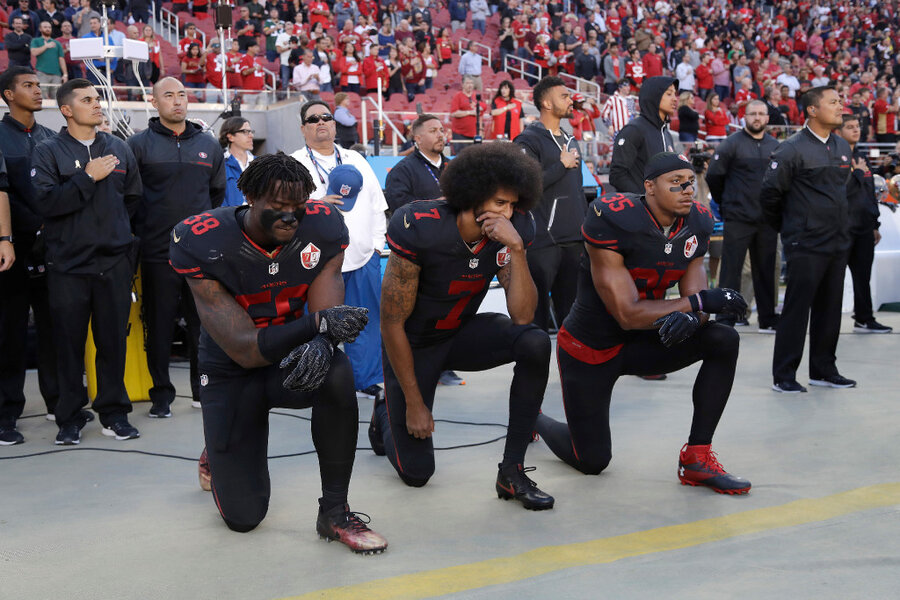Are national anthem protests hurting the NFL TV ratings?
Loading...
In the past four weeks, the NFL's TV ratings have dropped by 11 percent. While the timeline coincides with the start of San Franchisco 49ers’ quarterback Colin Kaepernick’s protest of the national anthem, the NFL attributes the decline to viewer interest in election coverage.
NFL executives Brian Rolapp and Howard Katz penned a letter to all 32 teams explaining the situation, in response to media inquiries about the decline in ratings, which prior to this season have been consistently high.
“While our partners, like us, would have liked to see higher ratings, they remain confident in the NFL and unconcerned about a long-term issue,” said the letter from Rolapp and Katz. They added that ratings have grown by 27 percent in the last 15 years and that football “continues to be far and away the most powerful programming on television and the best place for brands and advertisers.”
The NFL has attributed this season’s drop in rates primarily to the above-average interest in the election, because while Sunday game-time ratings for ESPN, CBS, and NBC have gone down, those for Fox News, CNN, and MSNBC have gone up. Election coverage drew ratings away from the NFL in 2000 as well, during coverage of the George Bush and Al Gore election.
Other factors contributing to the lower ratings include the early-season absence of several key players, increased online NFL offerings, and potentially over-saturation of the market, with games airing Sunday, Monday, and Thursday.
The NFL made it clear that they do not attribute the 11 percent ratings drop to the national anthem protests that started with Mr. Kaepernick a month ago and have since swept the league.
“In fact, our own data shows that the perception of the NFL and its players is actually up in 2016,” NFL executives wrote in the letter to the teams.
And sales of Kaepernick’s jersey reflect that.
Initially, the second-string quarterback's protest angered fans, leading some to burn his jersey in disgust. Now, the NFL is selling more of his jerseys than it did in the last eight months combined, making it the third-highest selling jersey in the league, behind Dallas Cowboys’ Ezekiel Elliott and the New York Giants’ Odell Beckham Jr.
Athletes across other sports are joining in the protest as well, and the trend is spreading to non-professional teams as well.
"I think it shows that the younger generations are about this and they did it together," Phoenix Mercury player Mistie Bass told the Associated Press. "They are understanding what is going on in our society. It's perfect because they are so caught up in their phones. To see them standing up for social injustices, and wanting things to be right in their communities, I think is awesome."








